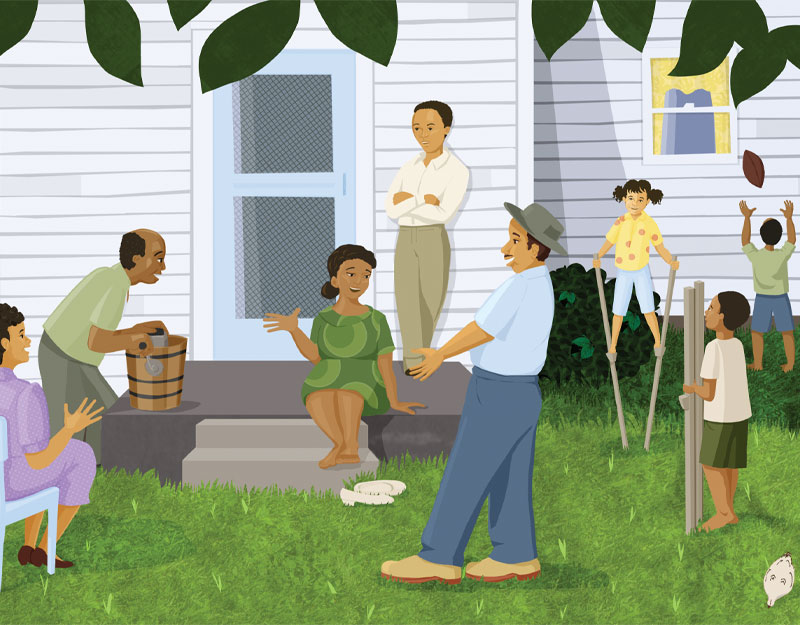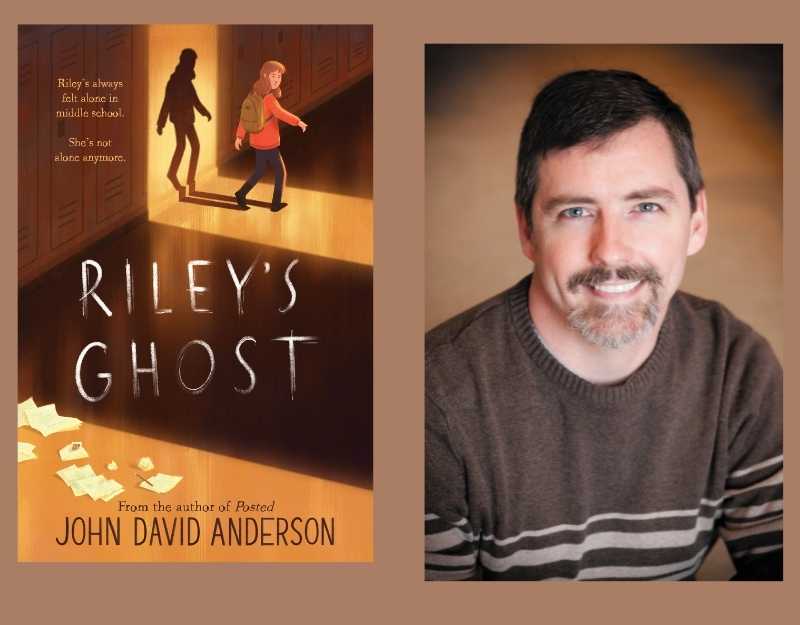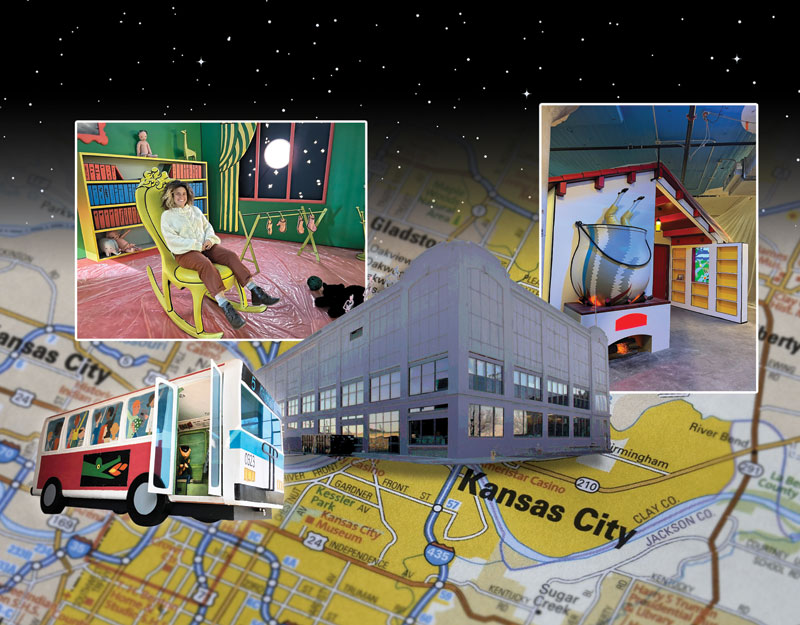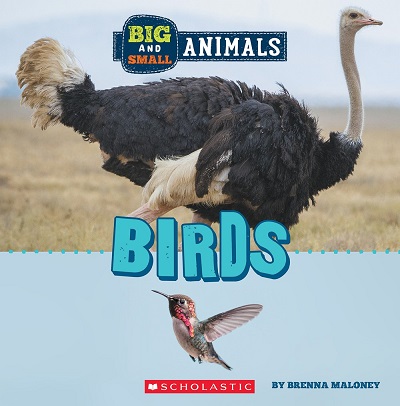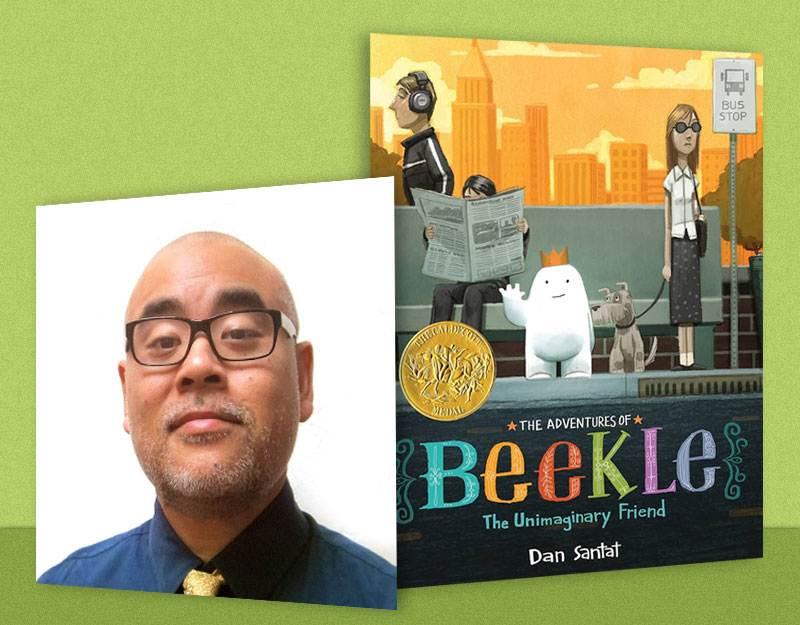Review of the Day: Living Ghosts and Mischievous Monsters selected by Dan Sasuweh Jones (Ponca Nation), ill. Weshoyot Alvitre (Tongva Nation)

Living Ghosts and Mischievous Monsters: Chilling American Indian Stories
Written and selected by Dan Sasuweh Jones (Ponca Nation)
Illustrated by Weshoyot Alvitre (Tongva Nation)
Scholastic Press
$26.99
ISBN: 9781338681628
On shelves now
I mean, if I’m going to be truly honest with you, I’m just reading children’s books to satisfy the 10-year-old that still lurks inside of me. I don’t often indulge it, because if I did then I’d pretty much just end up reading ghost story after ghost story, and where would that get me? Still, it’s nice when 43-year-old me and 10-year-old me can reach some kind of an agreement. For example, when I picked up Living Ghosts & Mischievous Monsters I had a whole internal dialogue that went something like this:
10-year-old Me: Oo! Me want! Read it!
43-year-old Me: Why are you speaking like Cookie Monster?
10-year-old Me: Fine. Just read it. Please.
43-year-old Me: Wait wait wait, little missy. I’m not jumping into this without some background information. What if this is a bunch of Indigenous stories collected by white people without permission? That happens all the time.
10-year-old Me: Ugh, it’s not. Just read it!
43-year-old Me: Hmmm. Well, you seem to be right. The book makes a very big deal about how responsibly sourced these stories are. The collector himself is the former Chairman of the Ponca Tribe of Indians of Oklahoma and a storytelling consultant for National Geographic. Plus he credits every source, and sometimes gives additional background information on why they can be retold. The illustrator herself is of the Tongva Nation.
10-year-old Me: But are these stories scary?
43-year-old Me: Only one way to find out.
10-year-old Me: sotto voce Yesssss!
ADVERTISEMENT
ADVERTISEMENT
Reader, they are scary. Really scary. The kinds of stories you wish you could find more often for your child readers. Got a fear of living dolls, skin-sucking babies, or otters? Don’t worry. You will now.

Thirty-two short stories are collected from a variety of tribes and storytellers. Though they vary widely they all have on thing in common: They’re terrifying. Split into five sections the book collects its tales under the headings “Ghosts”, “Spirits”, “Witches”, “Monsters”, and “The Supernatural”. This allows the reader to dip in or read it straight through. Always crediting his sources or giving voice to the storytellers that lay claim to these stories, the book is a collection of older tellings as well as contemporary ones. You might find Dan SaSuWeh Jones’s story while visiting the River People of a deer spirit possessing a young man next to a traditional Kawaiisu tale of a Rock Baby (as a general rule, if you hear a baby crying in one of these stories, run). Illustrated with pen-and-ink illustrations, the book has the distinction of added to the coterie of nightmares accessible to your children. They’ll love it. Back matter includes Acknowledgements, Other Sources, Further Reading, and a list of recommended Websites.
What makes a good scary story? Part of what makes Living Ghosts work as well as it does, is that there isn’t a single answer to that question. Jones tries a variety of different techniques. The stories that are more contemporary have the chill factor of feeling especially real to the reader. One standout that comes to mind is “Twin Child Was Arapaho”, told by Maggie Marie Miller, Northern Arapaho, Oglala Sioux, Wyoming. In this story, Miller recounts when she was driving in the car with her twin 5-year-old girls. When she took a new route through an area that was once a battleground “where Indian enemies fought each other,” she figured her kids wouldn’t even notice. That is, until one of her girls started screaming. That story has a nice high-quality eerie factor. In other cases, Jones likes to end his story with a gut punch ending. Lines like “It was the last thing the man saw. He was now blind,” or my personal favorite, “In that second, its mouth opened.” Still other stories are more eerie than anything else. They contain the unexplained but rather than jumping out and yelling “Boo!” they just leave you uncertain and wary. Maybe a little bit unhinged.
All short story collections are, to a certain extent, a mixed bag. The person doing the editing or writing has to try to provide variety as well as quality. So just due to personal preference, some stories are going to stand out for you more than others. In my own case, I thought the stories that directly involved Dan SaSuWeh Jones himself were often the creepiest. “The Walking Doll” will give you automatonophobia like nothing else. But I had a real appreciation for some of the stories that honestly should not have been scary and were. On paper, the idea of a person who is part otter sounds cuddly, but read “The Kushtaka” and you may find yourself a little less fond of those furry critters.

I’ve heard some comparisons of this book to Alvin Schwartz’s [book: Scary Stories to Tell in the Dark], and I can see why folks would say that. Schwartz had a particular penchant for urban legends, so his books tended to mix older tales with new stories. This book does the same. Then there’s the creepy art. Though Stephen Gammel had a particular penchant for images that would haunt your dreams (does anyone else see that eyeless, noseless woman whenever they close their eyes, or is that just me?) don’t write off Alvitre here. Some of these pictures do more with less. “The Chenoo: The Cannibal with an Icy Heart” (a traditional Micmac and Pasamaquoddy Tale of Maine and Northeastern Canada) is accompanied with the simple image of an axe. In this way Alvitre leaves it open to the reader’s imagination to figure out how that axe is going to fit into the story. And honestly, when the word “cannibal” crops up in your title, you’ll probably have some guesses.
Naturally you’ll have some 10-year-olds already delving into Stephen King that blow off Living Ghosts as insufficiently scary. I would bet, however, that if they read this book cover to cover they’d find at least one section inside that gives them goose bumps. This gives me hope too. A lot of time, when we try to include a wide range of different voices and experiences on our library/school/bookstore/personal shelves, we fall into the trap of only getting books based on historical trauma. Happily, 2021 has given me a lot to be hopeful for. Whether it’s the hilarious JoJo Makoons and the Heartdrum imprint or Joseph Bruchac’s [book: Rez Dogs] or this collection of scary tales, Indigenous literature for kids isn’t relegating itself to only one kind of book. And for librarians and teachers desperate to diversify their Halloween sections, Jones’s book may prove a real godsend. Spine-chilling and horrific by turns, here’s the book to hand to the kid looking for some scares and thrills. Just don’t read it with the lights off.
On shelves now.
Source: Galley sent from publisher for review.
Other Reviews: The Wall Street Journal
Filed under: Best Books, Best Books of 2021, Reviews, Reviews 2021
About Betsy Bird
Betsy Bird is currently the Collection Development Manager of the Evanston Public Library system and a former Materials Specialist for New York Public Library. She has served on Newbery, written for Horn Book, and has done other lovely little things that she'd love to tell you about but that she's sure you'd find more interesting to hear of in person. Her opinions are her own and do not reflect those of EPL, SLJ, or any of the other acronyms you might be able to name. Follow her on Twitter: @fuseeight.
ADVERTISEMENT
ADVERTISEMENT
SLJ Blog Network
2024 Books from Pura Belpré Winners
Winnie-The-Pooh | Review
Parsing Religion in Public Schools
Finding My Own Team Canteen, a cover reveal and guest post by Amalie Jahn
ADVERTISEMENT



